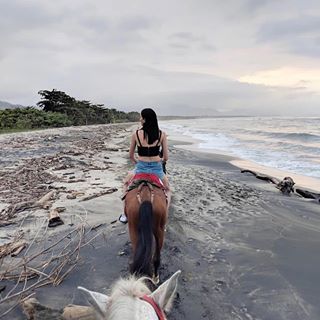
Leading an amazing yoga retreat is an appealing idea for many yoga professionals. However, planning a yoga retreat is an immense amount of work. Inexperienced leaders may make the mistake of entering the process without a clear vision of where they want to end up. The first step in planning an unforgettable yoga retreat is to get clear on your vision for the experience.
1) What is your vision of a successful yoga retreat?
Begin by defining your vision of a successful yoga retreat. Is success defined by a location, a new place to explore? Perhaps your best outcome is to bring a new community together for all to enjoy. Is there a financial aspect to reaching this goal? Possibly, there is a lesson you hope to teach to those who attend. Think deeply about how you will define the success of your yoga retreat. This is the foundation of all your planning.
2) Where do you want to go?
Choose a location that speaks to you, and feels authentic. Of course, your community must support traveling to your preferred destination. But, if you aren’t excited about visiting, then you’re setting yourself up for a difficult journey. When you visualize the yoga retreat, are you in the mountains? Are you on the beach? Is the setting urban or remote? The world is large, however answering a few of these questions will narrow your search.
3) When do you want to retreat?
Timing your yoga retreat appropriately is very important to achieving your goals. First, make sure you leave yourself enough time to plan and sell the retreat. We suggest no fewer than 6 months, but probably not more than 12 months, for international yoga retreats. With that guideline in mind, review your schedule for the coming year. Block off important family obligations. Note other large projects you might have planned, such as a YTT. Think about when your community likes to get away, and has the time.
4) What environment do you want to foster?
Your yoga retreat must be an authentic extension of you. Place emphasis on experiences you love such as: service projects, food, culture, music, arts, history, nature, and activities. These curated experiences form the backdrop of your yoga retreat. You should select them intentionally in order to foster the environment you wish to offer your students.
5) How large of a group do you want to lead?
A yoga retreat can be small and intimate, or larger and more broadly inclusive. Do you wish to perform deeper work with a tight knit group of 6 to 8 yogis? Perhaps creating a space for a larger community to come together sparks joy in you. Envision meal times. Do you see a single discussion at an intimate table, or do you hear the joyful din of a party of 20 diners in a private space? How many mats lay in front of you when you settle in to teach a class? Choose what feels comfortable for you.
Don’t rush through this important first step in planning a yoga retreat. With these considerations clearly defined in your vision, you’ll be able to make good choices in the rest of the planning process. As always, never be afraid to ask advice. SolSeed has planned dozens and dozens of yoga retreats, and we’d be pleased to chat with you about all the steps involved.
Additional Resources for Planning Yoga Retreats:



